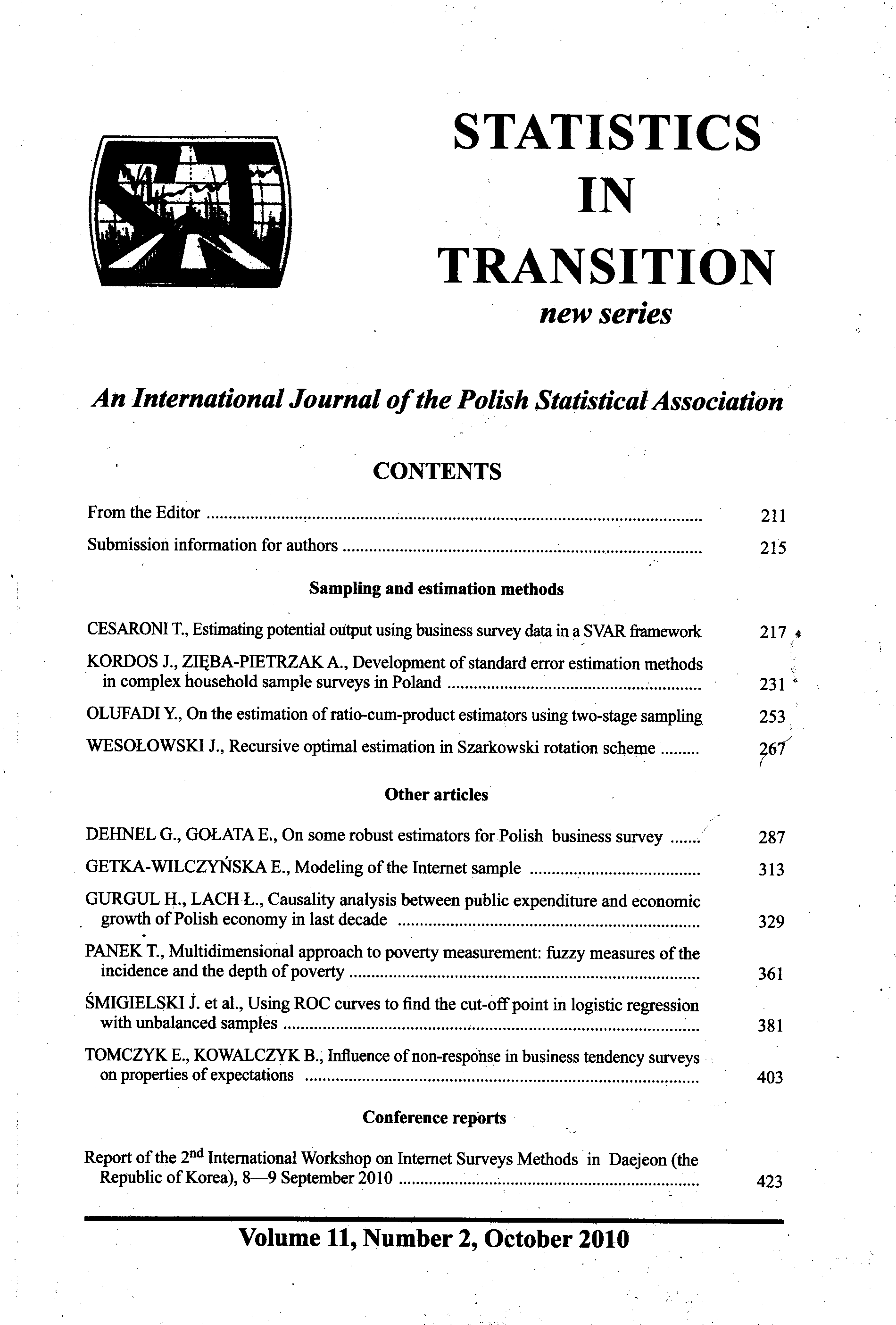ARTICLE
ABSTRACT
Potential output and the related concept of output gap play a central role in the macroeconomic policy interventions and evaluations. In particular, the output gap, defined as the difference between actual and potential output, conveys useful information on the cyclical position of a given economy. The aim of this paper is to propose estimates of the Italian potential GDP based on structural VAR models. With respect to other techniques, like the univariate filters (i.e. the Hodrick-Prescott filter), the estimates obtained through the SVAR methodology are free from end-of-sample problems, thus resulting particularly useful for shortterm analysis. In order to provide information on the economic fluctuations, data coming from business surveys are considered in the SVAR model. This kind of data, given their cyclical profile, are particularly useful for detrending purposes, as they allow including information concerning the business cycle activity. To assess the estimates reliability, an end-of-sample revisions evaluation is performed. The ability of the cyclical GDP component obtained with the SVAR decomposition to detect business cycle turning points, over the expansion and recession phases of the Italian business cycle chronology is then performed.
KEYWORDS
potential output, business survey data, structural VAR models, endof- sample revisions.
REFERENCES
ALTISSIMO F. MARCHETTI D.J. ONETO G.P. (1999) “The Italian Business Cycle: New Coincident and Leading Indicators and Some Stylized Facts”, ISAE W.P n° 8.
BAXTER A. KING R. (1995) “Measuring business cycles approximate band-pass filters for economic time series” NBER W.P. No. 5022.
BEVERIDGE S. NELSON C.R. (1981) “A new approach to decomposition of economic time series into permanent and transitory components with particular attention to measurement of the business cycle” Journal of Monetary Economics 7, 151–174.
BLANCHARD O.J. QUAH D. (1989) “The Dynamics Effects of Aggregate Demand and Supply Disturbances” The American Economic Review, 79 655–673.
BURNS E MITCHELL (1946) Measuring Business Cycles. New York, NBER.
CLARK P. K. (1987) “The cyclical component of US economic activity” The Quarterly Journal of Economics 102, 794–814.
CESARONI T. (2007) “Inspecting the cyclical properties of Italian Manufacturing Business Survey” data W.P. ISAE n. 83.
CLAUS I. (2003) “Estimating potential output for New Zealand” Applied Economics 35, 751–760.
COGLEY, TIMOTHY & NASON, JAMES M., (1995) “Effects of the Hodrick-Prescott filter on trend and difference stationary time series Implications for business cycle research”, Journal of Economic Dynamics and Control, Elsevier, vol. 19(1–2), pages 253–278.
HARVEY A. C. (1985) “Trend and Cycles in U.S. macroeconomic time series” Journal of Business and Economic Statistics 3, 216–27.
HEARN B.A and WOITEK U. (2001) “More international evidence on the historical properties of business cycles” Journal of Monetary Economics, 4, 289–319.
HODRICK R.J. and PRESCOTT E.C. (1997) “Postwar U.S. Business Cycles: An Empirical Investigation” Journal of Money, Credit, and Banking 29 (1):1–16.
ORPHANIDES, VAN NORDEN S. (2001) “The unreliability of output gap estimates in real time” The review of economics and statistics vol. LXXXIV n°4.
ORPHANIDES, VAN NORDEN S. (1999) “The Reliability of Output Gap Estimates in Real Time” Federal Reserve Board Finance and Economics Discussion series n° 1999–38.
ST-AMANT P. and S. VAN NORDEN (1997) “Measurement of the Output Gap: A Discussion of Recent Research at the Bank of Canada” Technical Report No. 79. Ottawa: Bank of Canada.
VAN NORDEN S. (1995) “Why is so hard to measure current output gap” Banque di Canada, mimeo.
TAYLOR J. (1993) “Discretion versus Policy Rules in Practice” Carnegie- Rocester Conference series on Public Policy vol. 39 pag 195–214.
